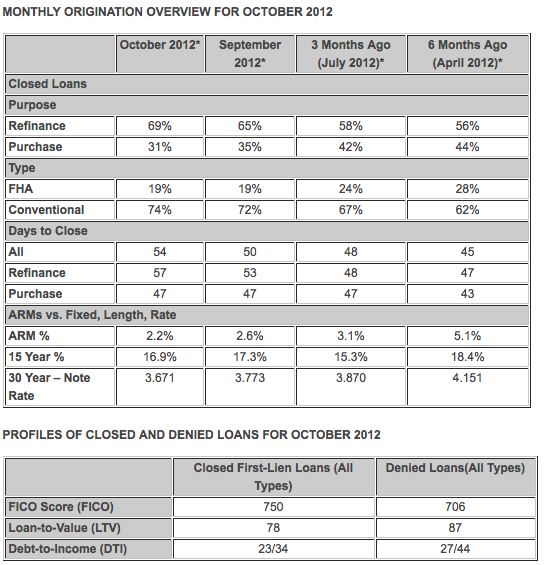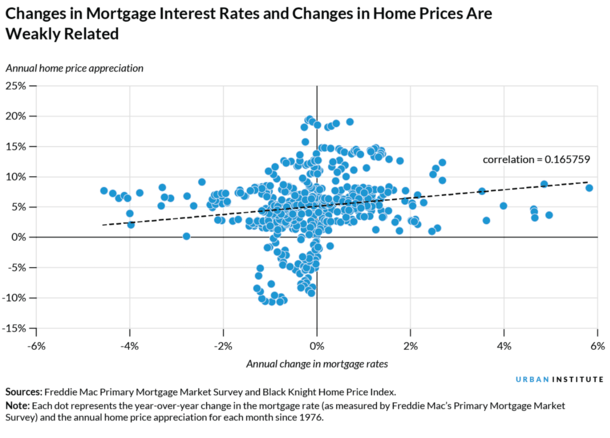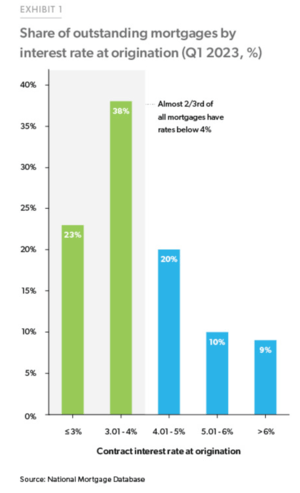
A limit order allows investors to buy or sell securities at a price they specify or better, providing some price protection on trades.
When you set a buy limit order, for example, the trade will only be executed at that price or lower. For sell limit orders, the order will be executed at the price you set or higher. By using certain types of orders, traders can potentially reduce their risk of losses and avoid unpredictable swings in the market.
How do Limit Orders Work?
In the simplest terms, limit orders work as a sort of restriction that an investor can choose (to either buy or sell) with “limits” on a minimum or maximum price. An investor places an order to buy a stock at a minimum price, for instance, or places an order to sell at a maximum price, in an effort to maximize their returns.
There are two types of limit orders investors can execute: buy limit orders and limit sell orders. An important thing to know is that while a limit order specifies a desired price, it doesn’t guarantee the trade will occur at that price — or at all.
When you set a limit order, the trade will only be executed if and when the security meets the terms of the order — which may or may not happen, depending on the overall market conditions. So, when an investor sets a limit order, it’s possible to miss out on other investing opportunities.
Types of Limit Orders
As mentioned, there are two types of limit orders investors can execute: buy limit orders and limit sell orders.
For buy limit orders, you’re essentially setting a ceiling for the trade — i.e. the highest price you’d be willing to pay for each share. For sell limit orders, you’re setting a price floor — i.e. the lowest amount you’d be willing to accept per share.
• What is limit order to buy? If a trader places a buy limit order, the intention is to buy shares of stock. The order will be triggered when the stock hits the limit price or lower.
For example, you may want to buy shares of XYZ stock at $15 each. You could place a buy limit order that would allow the trade to be carried out automatically if the stock reaches that purchase price or better.
• What is limit order to sell? If a trader places a limit order to sell, the order will be triggered when the stock hits the limit price or higher. So you could set a sell limit order to sell XYZ stock once its share price hits $20 or higher.
As noted above, the main upside of using limit orders is that traders get to name a desired price; they generally end up paying a price they expect; and they can set an order to execute a trade that can be executed even if they are doing other things.
In this way, setting limit orders can help traders seize opportunities they might otherwise miss because limit orders can stay open for months or in some cases indefinitely (the industry term is “good ‘til canceled,’ or GTC). The limit order will still execute the trade once the terms are met.
Limit Order vs Market Order
Limit orders differ from market orders, which are, essentially, orders to buy a security immediately at its given price. These are the most common types of orders. So, while a market order is executed immediately regardless of terms, limit orders only execute under certain circumstances.
Limit orders can also be set for pre-market and after-hours trading sessions. Market orders, by contrast, are limited to standard trading hours (9:30am to 4pm ET).
Remember: Even though limit orders are geared to a specific price, that price isn’t guaranteed. First, limit orders are generally executed on a first-come-first-served basis. So there may be orders ahead of yours that eliminate the availability of shares at your limit price.
And it bears repeating again: There is also the potential for missed opportunities: The limit order you set could trigger a trade. But then the stock or other security might hit an even better price.
In other words, time is a factor. In today’s market, computer algorithms execute the majority of stock market trades. In this high-tech trading environment, it can be hard as an individual trader to know when to buy and sell. By using certain types of orders, like limit orders, traders can potentially limit their losses, lock in gains, and avoid swings in the market.
Though limit orders are commonly used as a part of day trading strategies, they can be useful for any investor who wants some price protection around their trades. For example, if you think a stock is currently undervalued, you could purchase it at the current market price, then set a sell limit order to automatically sell it when the price goes up. Again, the limit order can stay open until the security meets your desired price — or you cancel the order.
However, speculating in the market can be risky and having experience can be helpful when deciding how and when to set limit orders.
💡 Quick Tip: Did you know that opening a brokerage account typically doesn’t come with any setup costs? Often, the only requirement to open a brokerage account — aside from providing personal details — is making an initial deposit.
Limit Orders vs Stop Orders
There is another type of order that can come into play when you’re trying to control the price of a trade: a stop order. A stop order is similar to a limit order in that you set your desired price for a stock, say, and once the stock hits that price or goes past it, a market order is triggered to execute the purchase or sale.
The terms of a limit order are different in that a trade will be executed if the stock hits the specified price or better. So if you want to sell XYZ stock for $50 a share, a sell limit order will be triggered once the stock hits $50 or higher.
A stop order triggers a market order once XYZ stock hits $50, period. By the time the order is executed, the actual stock price could be higher or lower.
Thus with a stop order there’s also no guarantee that you’ll get the specified price. A market order is submitted once the stop price is hit, but in fast-moving markets the actual price you pay might end up being higher or lower.
Stop orders are generally used to exit a position and to minimize losses, whereas limit orders are used to capture gains. But two can also be used in conjunction with each other with something called a stop-limit order.
Stop-Limit Orders
A stop-limit order is a combination of a stop order and a limit order. Stop-limit orders involve setting two prices. For example: A stock is currently priced at $30 and a trader believes it’s going to go up in value, so they set a buy stop order of $33.
When the stock hits $33, a market order to buy will be triggered. But with a stop-limit order, the trader can also set a limit price, meaning the highest price they’re willing to pay per share — say, $35 per share. Using a stop-limit order gives traders an additional level of control.
Stop-limit orders can also help traders make sure they sell stocks before they go down significantly in value. Let’s say a trader purchased stock XYZ at $40 per share, and now anticipates the price will drop. The trader doesn’t want to lose more than $5 per share, so they set a stop order for $35.
If the stock hits $35 — the stop price — the stock will be triggered to sell. However, the price could continue to drop before the trade is fully executed. To prevent selling at a much lower price than $35, the trader can set a limit order to only sell between $32 and $35.
When a Trader Might Use a Limit Order
There are several reasons why you might want to use a limit order.
• Price protection. When a stock is experiencing volatility, you may not want to risk placing a market order and getting a bad price. Although it’s unlikely that the price will change drastically within a few seconds or minutes after placing an order, it can happen, and setting a limit order can set a floor or a ceiling for the price you want.
• Convenience. Another occasion to use a limit order might be when you’re interested in buying or selling a stock but you don’t want to keep a constant eye on the price. By setting a limit order, you can walk away and wait for it to be executed. This might also be a good choice for longer-term positions, since in some cases traders can place a limit order with no expiration date.
• Volatility. Third, an investor may choose to set a limit order if they are buying or selling at the end of the market day or after the stock market has closed. Company or world news could be announced while the market is closed, which could affect the stock’s price when the market reopens. If the investor isn’t able to cancel a market order while the market is still closed, they may not be happy with the results of the trade. A limit order can help prevent that.
Limit orders can also be useful when the stock being traded doesn’t have a lot of liquidity. If there aren’t many people trading the stock, one order could affect the price. When entering a market order, that trade could cause the price to go up or down significantly, and a trader could end up with a different price than intended.
Get up to $1,000 in stock when you fund a new Active Invest account.**
Access stock trading, options, auto investing, IRAs, and more. Get started in just a few minutes.
**Customer must fund their Active Invest account with at least $10 within 30 days of opening the account.
Probability of customer receiving $1,000 is 0.028%. See full terms and conditions.
When to Consider a Market Order vs a Limit Order
If you’re trying to parse out when a market order or a limit order is the best tool to use, consider the following.
A trader might want to use a market order if:
• Executing the trade immediately is a priority
• The stock is highly liquid
• They’re only trading a small number of shares
• The stock has a narrow bid-ask spread (about a penny)
A trader might want to use a limit order if:
• They want to specify their price
• They are trading an illiquid stock
• They want to set a long-term trade (or even walk away for their lunch break and still have the trade execute)
• They feel a stock is currently over- or undervalued
• The stock has a large bid-ask spread
• They are trading a larger number of shares
How to Set a Limit Order
When placing a limit order with your brokerage firm, the broker or trading platform might ask for the following information:
• The stock or security
• Is it a buy or sell order
• Number of shares to buy or sell
• Stock order type (limit order, market order, or another type of order)
• Price
When setting up a limit order, the trader can set it to remain open indefinitely, (until the stock reaches the limit price), or they can set an expiration date.
For example, say a trader would like to purchase 100 shares of stock XYZ. The highest price they want to pay per share is $26.75. They would set up a limit buy order like this:
Buy 100 shares XYZ limit 26.75.
Is a Limit Order Bad?
Limit orders are not necessarily good or bad. As mentioned, they can offer advantages to investors who understand how to use them.
For example, limit orders can offer more control and flexibility than using market orders. And they can work well in a number of different trading situations. If the stock being traded is highly volatile, for instance, a limit order can help traders retain control and avoid paying an unexpected price.
Each time a trader does research on a stock and decides to buy or sell shares, they also consider their goals and the current market conditions to decide whether to place a market or a limit order.
Pros and Cons of Using Limit Orders
Each type of order has pros and cons depending on the particular situation.
Pros of Limit Orders:
• The trader gets to name their price. One of the chief reasons traders rely on limit orders is to set baselines for profits and losses. They won’t end up paying a price they didn’t expect when they buy or get a price below their target when it’s time to sell.
• The trader can set the order and walk away. Day trading can be time consuming and it requires a significant amount of knowledge. Investors who use limit orders don’t have to continuously watch the market to get the price they want.
• Traders may pay less in fees. Commissions can take a bite out of your profits, something many investors would prefer to keep to a minimum. When trading illiquid stocks, sometimes the bid-ask spread is enough to cover broker fees.
• Insulate against volatility. Volatility can cause you to make emotional decisions. Limit orders can give traders more control over their portfolio and ward off panic-buying or selling.
• Ride the gaps. Stock prices can fluctuate overnight due to after hours trading. It’s possible to benefit from price differences from one day to another when using limit orders.
For example, if a trader places a buy limit order for a stock at $3.50, but the order doesn’t get triggered while the market is open, the price could change overnight. If the market opens at $3.30 the next morning, they’ll get a better price, since the buy limit order gets triggered if the stock is at or below the specified price.
Cons of Limit Orders:
• The order may never be executed. There may not be enough supply or demand to fulfill the order even if it reaches the limit price, since there could be hundreds or even thousands of other traders wanting to buy or sell at the specified price.
• The stock may never reach the limit price. For example, if a stock is currently priced at $20, a trader might set a limit order to buy at $15. If the stock goes down to $16 and then back up to $20, the order won’t execute. In this case, they would miss out on potential gains.
• The market can change significantly. If a trader sets a shorter-term limit order they might miss out on a better price. For example, if a stock a trader owns is currently priced at $150, the trader may choose to set a sell limit order at $154 within four weeks. If the company then makes a big announcement about a new product after that period, and the stock’s price spikes to $170, the trader would miss out on selling at that higher price.
• It takes experience to understand the market and set limit orders. New investors can miss out on opportunities and experience unwanted losses, as with any type of investment.
What Happens If a Limit Order Is Not Filled?
A limit order can only be filled if the stock’s price reaches the limit price or better. If this doesn’t happen, then the order is not executed and it expires according to the terms of the contract. An order can be good just for a single trading day, for a certain period of time, or in some cases it’s possible to leave the limit order open-ended using a GTC (good ‘til canceled) provision.
So if you placed a buy limit order, but the stock does not reach the specified price or lower, the purchase would not be completed and the order would expire within the specified time frame.
And if you’re using a sell limit order, but the security never reaches the specified sell price or higher, the shares would remain in your trading account and the order would expire.
💡 Quick Tip: How do you decide if a certain trading platform or app is right for you? Ideally, the investment platform you choose offers the features that you need for your investment goals or strategy, e.g., an easy-to-use interface, data analysis, educational tools.
Limit Orders and Price Gaps
Price gaps can occur when stocks close at one price then open at a different price on the next trading day. This can be attributed to after-market or pre-market trading that occurs after the regular market hours have ended. After-hours trading can impact stock price minimally or more substantially, depending on what’s spurring trades.
For example, say news of a large tech company’s planned merger with another tech giant leaks after hours. That could send the aftermarket trading markets into a frenzy, resulting in a radically different price for both company’s stocks when the market reopens. Pricing gaps don’t necessarily have to be wide but large pricing swings are possible with overnight trading.
Limit orders can help to downplay the potential for losses associated with pricing gaps. Placing a buy limit order or limit sell order may not close the gap entirely. But it could help to mitigate the losses you may experience when gaps in pricing exist. Whether the gap is moving up or down can determine what type of limit order to place and where to cap your limit price.
The Takeaway
Limit orders can be an effective and efficient way for investors to set price caps on their trades, and also give them some protection against market swings. Limit orders offer other advantages as well, including giving traders the ability to place longer- or shorter-term trades that will be executed even if they’re not continuously watching the market. This can potentially protect investors against losses and potentially lock in gains.
That said, limit orders are complicated because they don’t guarantee that the trade will be executed at the set price. The stock (or other security) could hit the limit price — and there might not be enough supply or demand to complete the trade. There is also the potential for some missed opportunities, if the price you set triggers a trade, and subsequently the stock or other security hits an even better price.
Investors can also consider combining a limit order with a stop order. A stop-limit order can provide even more protection against potential losses.
Ready to invest in your goals? It’s easy to get started when you open an investment account with SoFi Invest. You can invest in stocks, exchange-traded funds (ETFs), and more. SoFi doesn’t charge commissions, but other fees apply (full fee disclosure here).
For a limited time, opening and funding an Active Invest account gives you the opportunity to get up to $1,000 in the stock of your choice.
FAQ
Can I specify the price for a limit order?
Yes, investors can specify the price for a limit order. In fact, the price typically is the limit in a limit order, representing either a price ceiling or a price floor.
How long does a limit order stay active?
Generally, a limit order will stay active indefinitely, unless an investor cancels it or specifies otherwise. That means that if the limit is never reached, the order will not execute, and the limit order will remain active until the limit is reached.
Can I cancel a limit order once it’s placed?
Investors can cancel standing limit orders as long as conditions haven’t arrived that’s led to the order being actively executed. The cancelation process will depend on the specific exchange an investor is using, however.
What happens if the market price doesn’t reach my limit price?
If the market price of a stock does not reach the limit price — either a price floor or price ceiling — then the limit order will not execute, and the limit order will remain active until it does.
Can I place a limit order outside of regular trading hours?
It’s possible to place limit orders outside of regular trading hours, depending on the rules of a given exchange, and market conditions dictate. The order itself, of course, won’t execute until the market opens, assuming that the limit is reached.
Are there any fees associated with limit orders?
There may or may not be fees associated with limit orders, and it’ll depend on the specific exchange or brokerage an investor is using. Note that some brokerages may charge higher fees for limit orders than market orders — but some may charge no fees at all.
Are limit orders guaranteed to be executed?
No, there is no guarantee that a limit order will be executed, as it will only execute if the limit price is reached. If the limit is not reached, the order will remain active but not execute.
SoFi Invest®
The information provided is not meant to provide investment or financial advice. Also, past performance is no guarantee of future results.
Investment decisions should be based on an individual’s specific financial needs, goals, and risk profile. SoFi can’t guarantee future financial performance. Advisory services offered through SoFi Wealth, LLC. SoFi Securities, LLC, member FINRA / SIPC . SoFi Invest refers to the three investment and trading platforms operated by Social Finance, Inc. and its affiliates (described below). Individual customer accounts may be subject to the terms applicable to one or more of the platforms below.
1) Automated Investing—The Automated Investing platform is owned by SoFi Wealth LLC, an SEC registered investment advisor (“Sofi Wealth“). Brokerage services are provided to SoFi Wealth LLC by SoFi Securities LLC, an affiliated SEC registered broker dealer and member FINRA/SIPC, (“Sofi Securities).
2) Active Investing—The Active Investing platform is owned by SoFi Securities LLC. Clearing and custody of all securities are provided by APEX Clearing Corporation.
3) Cryptocurrency is offered by SoFi Digital Assets, LLC, a FinCEN registered Money Service Business.
For additional disclosures related to the SoFi Invest platforms described above, including state licensure of Sofi Digital Assets, LLC, please visit www.sofi.com/legal.
Neither the Investment Advisor Representatives of SoFi Wealth, nor the Registered Representatives of SoFi Securities are compensated for the sale of any product or service sold through any SoFi Invest platform. Information related to lending products contained herein should not be construed as an offer or prequalification for any loan product offered by SoFi Bank, N.A.
Financial Tips & Strategies: The tips provided on this website are of a general nature and do not take into account your specific objectives, financial situation, and needs. You should always consider their appropriateness given your own circumstances.
Claw Promotion: Customer must fund their Active Invest account with at least $10 within 30 days of opening the account. Probability of customer receiving $1,000 is 0.028%. See full terms and conditions.
SOIN0723102
Source: sofi.com






